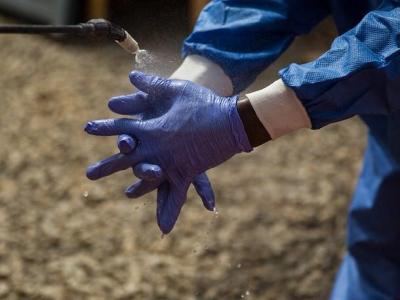PAHO reports steep rise in Americas measles cases
Countries in the Americas have reported a 70% increase in the number of measles cases since mid June, according to an update yesterday from the Pan American Health Organization (PAHO).
Since the first of the year 14 countries or territories in the region have reported 2,927 measles cases. The three countries with the most cases are the United States (1,172), Brazil (1,045), and Venezuela (417). Since the middle of June, 7 countries have reported cases, mostly of which have been in Brazil (923), the United States (128), and Venezuela (85).
Given continuing imported cases and ongoing outbreaks, PAHO, a World Health Organization (WHO) regional office, urged countries to take several steps, including maintaining 95% vaccine coverage, vaccinating at-risk populations, and maintaining a vaccine stockpile for prevention and outbreak control.
Aug 7 PAHO measles update
In other measles developments, San Diego County yesterday reported its first measles case of the year, according to a statement from the county's Health and Human Services Agency (HHSA).
The patient is an 11-month-old resident who had recently traveled to the Philippines. The baby is currently hospitalized, and health officials said he or she may have exposed others while getting care at a clinic and a hospital.
Aug 7 San Diego HHSA statement
CDC arbovirus report shows uptick of neuroinvasive West Nile virus
The US Centers for Disease Control and Prevention (CDC) today published an analysis of 2,813 arbovirus infections for 2018, focusing on insect-borne disease acquired domestically. As in past years, West Nile virus (WNV) made up the vast majority of cases, with 94%, but the neuroinvasive form of the disease was nearly 25% higher than the average during 2008 to 2017.
More La Crosse virus disease cases were reported in 2018 than any year since 2011, and the virus continued to be the most common source of neuroinvasive arboviral disease in children. The report appears in the latest issue of Morbidity and Mortality Weekly Report (MMWR).
The CDC said arbovirus remained an ongoing blood and tissue safety concern, with 2018 seeing the first documented case of Powassan virus transmission from blood transfusion and two WNV cases in solid-organ recipients from the same infected donor, signaling the first transplant-related cases since 2013.
Fewer Jamestown Canyon virus cases were reported in 2018 than in 2017, but at levels still higher than previous years. The CDC added that case increases in that viral diease might be linked to an increase in awareness and testing.
The agency urged healthcare providers to consider arboviral infections when assessing the differential diagnosis for aseptic meningitis or encephalitis, to obtain appropriate specimens, and to promptly report cases to public health officials.
Aug 9 MMWR report
WHO pandemic preparedness survey finds room for improvement
A new WHO survey on countries' pandemic preparedness revealed gaps, even in high- and middle-income countries, and it determined that targeted support is needed in some low-income countries, especially in Africa. The 56-page report with a June date on it appeared recently on the WHO's website.
The 55-question survey was completed by 104 of the 194 WHO member states. Overall, 88% said they had a national flu pandemic preparedness plan, but 54% aren't publicly available. The vast majority (88%) of countries said they plan to develop or update their plans in the next 1 to 2 years.
The survey found that only 40% had tested their plans in the past 5 years and that more than half weren't aware or were aware and had not consulted WHO guidance and planning tools.
In questions to gauge capacity areas, the global score was 29.4 (63.9%) of 46 possible points, with the score for high-income countries at 75%, upper-middle 66.6%, lower-middle 59%, and low-income 38.5%.
Overall, countries scored highest in preparing for an emergency and lowest in updating the status of national pandemic preparedness plans. Other gaps included establishing mechanisms to secure access to pandemic vaccine, including nonpharmaceutical measures in pandemic plans, preparing risk communications plans, developing plans to handle excess deaths, and establishing methods for conducting flu surveillance and severity assessments.
June WHO pandemic preparedness survey









